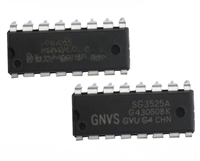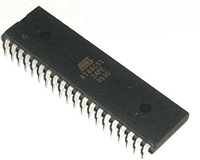| 是否无铅: | 含铅 | 是否Rohs认证: | 符合 |
| 生命周期: | Obsolete | 零件包装代码: | SOIC |
| 包装说明: | SOP, SOP16,.3 | 针数: | 16 |
| Reach Compliance Code: | unknown | ECCN代码: | EAR99 |
| HTS代码: | 8542.33.00.01 | 风险等级: | 5.17 |
| 放大器类型: | OPERATIONAL AMPLIFIER | 架构: | VOLTAGE-FEEDBACK |
| 最大平均偏置电流 (IIB): | 0.0006 µA | 25C 时的最大偏置电流 (IIB): | 0.0004 µA |
| 最小共模抑制比: | 78 dB | 标称共模抑制比: | 95 dB |
| 频率补偿: | YES | 最大输入失调电流 (IIO): | 0.0064 µA |
| 最大输入失调电压: | 1500 µV | JESD-30 代码: | R-PDSO-G16 |
| JESD-609代码: | e3 | 长度: | 10.3 mm |
| 低-偏置: | YES | 低-失调: | NO |
| 湿度敏感等级: | 1 | 负供电电压上限: | -18 V |
| 标称负供电电压 (Vsup): | -15 V | 功能数量: | 1 |
| 端子数量: | 16 | 最高工作温度: | 70 °C |
| 最低工作温度: | 封装主体材料: | PLASTIC/EPOXY | |
| 封装代码: | SOP | 封装等效代码: | SOP16,.3 |
| 封装形状: | RECTANGULAR | 封装形式: | SMALL OUTLINE |
| 包装方法: | TAPE AND REEL | 峰值回流温度(摄氏度): | 260 |
| 电源: | +-15 V | 认证状态: | Not Qualified |
| 座面最大高度: | 2.65 mm | 标称压摆率: | 2.8 V/us |
| 子类别: | Operational Amplifier | 最大压摆率: | 10 mA |
| 供电电压上限: | 18 V | 标称供电电压 (Vsup): | 15 V |
| 表面贴装: | YES | 技术: | BIPOLAR |
| 温度等级: | COMMERCIAL | 端子面层: | Matte Tin (Sn) |
| 端子形式: | GULL WING | 端子节距: | 1.27 mm |
| 端子位置: | DUAL | 处于峰值回流温度下的最长时间: | 40 |
| 标称均一增益带宽: | 4500 kHz | 最小电压增益: | 800000 |
| 宽度: | 7.5 mm | Base Number Matches: | 1 |
| 型号 | 品牌 | 描述 | 获取价格 | 数据表 |
| AD743JRZ-16-REEL | ADI | Ultralow Noise BiFET Op Amp |
获取价格 |

|
| AD743JRZ-16-REEL7 | ADI | Ultralow Noise BiFET Op Amp |
获取价格 |

|
| AD743KN | ADI | Ultralow Noise BiFET Op Amp |
获取价格 |

|
| AD743KQ | ETC | Voltage-Feedback Operational Amplifier |
获取价格 |

|
| AD743KR | ADI | IC OP-AMP, 500 uV OFFSET-MAX, 4.5 MHz BAND WIDTH, PDSO16, SOIC-16, Operational Amplifier |
获取价格 |

|
| AD743KR-16 | ADI | Ultralow Noise BiFET Op Amp |
获取价格 |

|
 SG3525资料手册详解:SG3525参数分析、引脚说明、应用介绍
SG3525资料手册详解:SG3525参数分析、引脚说明、应用介绍

 AT89C51单片机资料手册详细解析及应用示例
AT89C51单片机资料手册详细解析及应用示例

 CP2102资料手册解读:CP2102引脚说明、关键参数分析
CP2102资料手册解读:CP2102引脚说明、关键参数分析

 资料手册解读:UC3842参数和管脚说明
资料手册解读:UC3842参数和管脚说明
